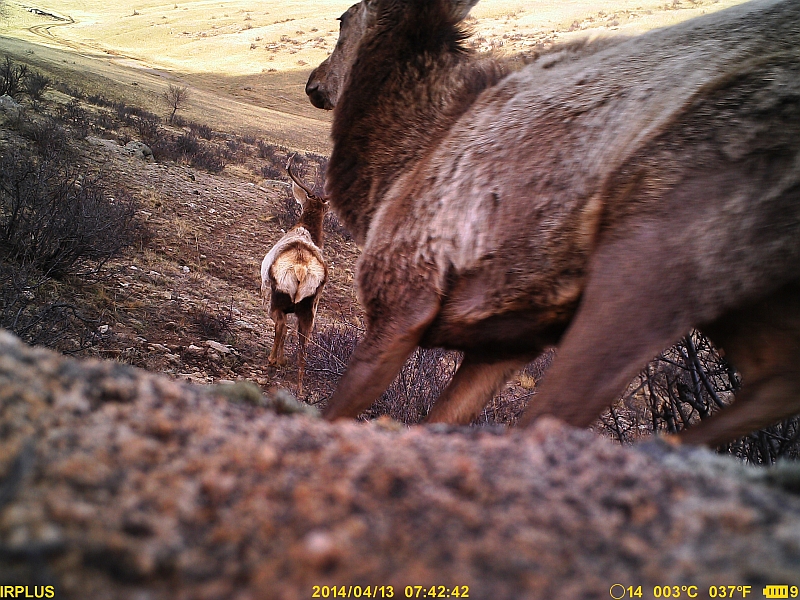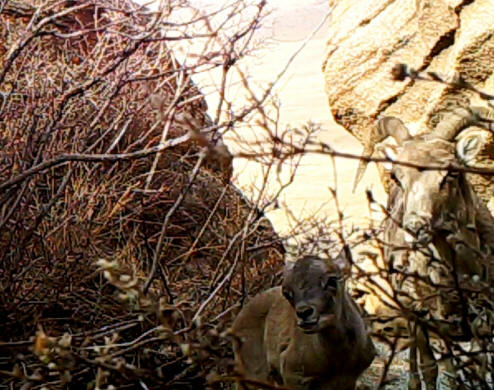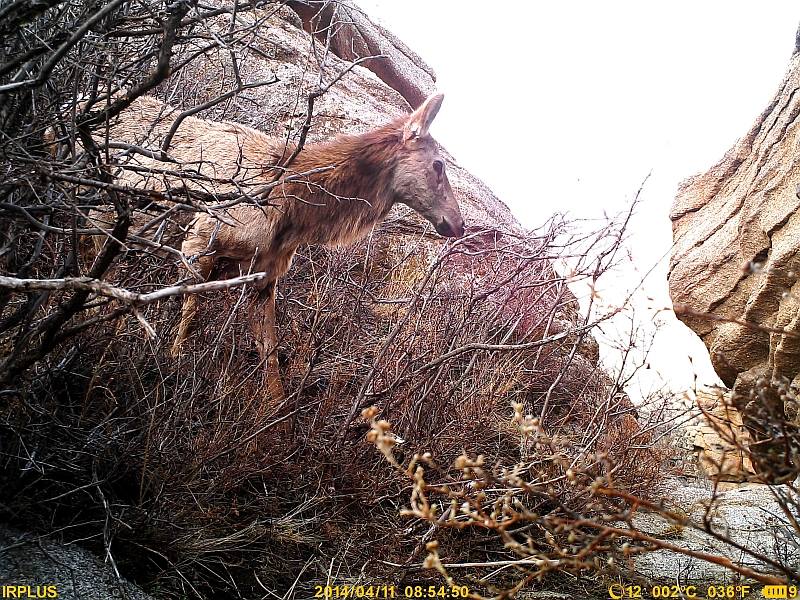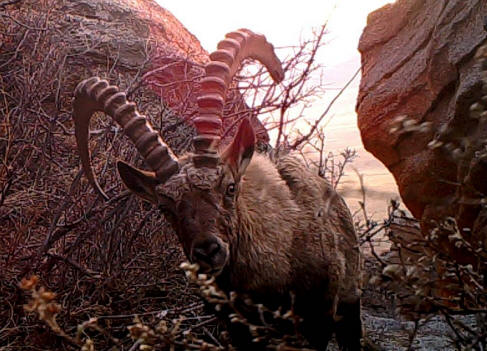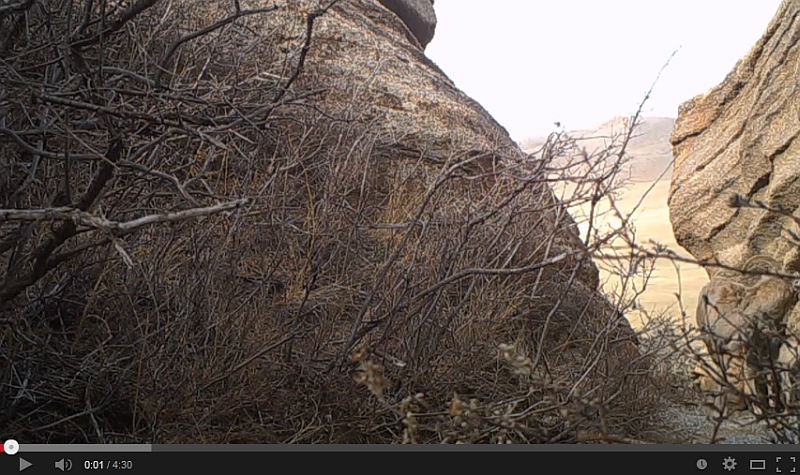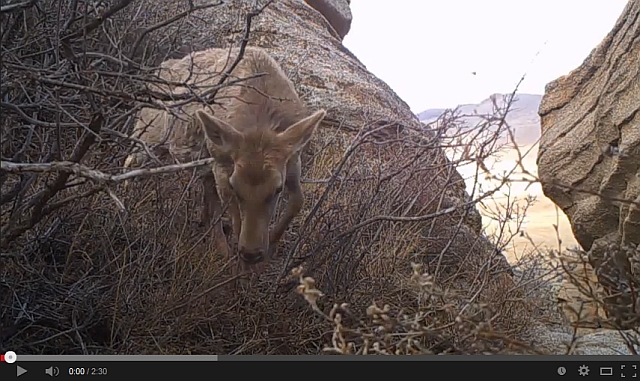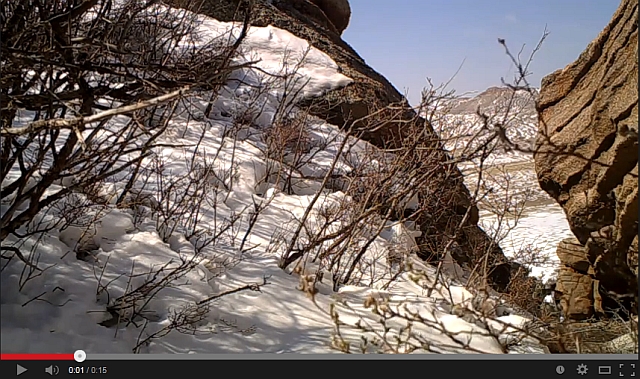|
|
||||||||||||||
|
IL NOSTRO IMPEGNO PER LA RICERCA: LA FINESTRA DEL RICERCATORE |
||||||||||||||
|
PROGETTO MONGOLIA
|
||||||||||||||
|
SECONDO AGGIORNAMENTO Update report: 20/05/2014 Author: Claudio Augugliaro
Fig. 1 – The photo above shows specimens of wapiti (Cervus canadiensis). Recently this group has been accepted as a separate species from C. elaphus, after a mitochondrial DNA analysis. The Wapiti are giants that can reach 600 kg (deer which occur in the Mediterranean are rarely reach over 100 kg). During the Pleistocene age, wapiti grazed on the steppes of Beringia, on the Bering Strait. At the end of the last ice age, Beringia was submerged by the ocean and the wapiti moved into North America and northeast Asia, forming separated populations.
The first 45 days of camera trapping can be deemed as a test for the placement of the cameras in the steppe environment, where difficulties can be encountered. Data can still be collected in this time to form the basis of hypotheses.
The best results have been obtained from placing the cameras in restricted passages, which can be found at the base of or on top of granite outcrops. In some cases, it is possible to find suitable canyons in such outcrops. Some Wapiti (fig. 1) have been recorded in open areas, where the passage of some ungulates was previously tracked. In this first sampling we preferred to not use scent to attract carnivores. However, no carnivores were detected. In past tests with 3 days of sampling using scent, several carnivores were recorded: wolf (Canis lupus chanco) and stone marten (Martes foina intermedia), both of which are subspecies distinct to central Asia.
Setting the mode to photo+video gave us the chance to identify various specimens and family groups.
Interesting data regarding the 3 large ungulate species occurring in the area were obtained: the Wapiti (Cervus canadiensis), the Argali (Ovis ammon) and the Siberian Ibex (Capra sibirica). Only one station had an adequate area for the passage of the three species. Specimens all three species used the passage to climb up a rock outcrop, between 6:00 am and 7:40 pm. The specimens probably went down to the steppe in the late evening to graze, but they never used the same passage as for getting up. These animals can move much faster in open terrain, and their passage was not recorded from 15 April to 5 May, during which time it snowed.
Three couples of adult Argali (Ovis ammon) with lambs (two couples with two lambs and one couple with one lamb) and probably two single adults were found at the granite outcrop. In Mongolia, the male argali weighs over 200 kg (five times more than Mediterranean wild sheep). It is possible that the specimens recorded all belong to the same group and the females are temporarily separated to raise their lambs born a few weeks earlier. For each specimen a distinctive sign has been found, for instance a broken horn or a pattern in the fur in the neck area. The specimen with a broken horn is likely a male. Two couples repeatedly used the passage many times from 13 to 15 April. At the moment it is too early to make a hypothesis on the reason for this high rate of passages in a so short a time. Previous studies found a population of 300 specimens in this area, which is believed to be accurate. The Bayangiin Uul outcrop is a very important refugee area for this central Asian species, which is listed as Near Threatened and is listed in Appendix II of CITES.
Fig. 2 – Argali (female) with lamb
Wapiti have been recorded in both the granite outcrop and in the open hills of the steppe. On 13 April a group of three males were observed who still had old antlers, which generally fall down in the late winter. The same specimens were recorded again later that day and had lost their antlers. They were recorded again 20 days later in the same area and had gotten new antlers covered with velvet.
The passage of a male without antlers and another with new antlers, and another four males with new antlers were recorded in the hilly area. It is impossible to determine if the same male was present in both groups.
More than 10 passages were recorded in the rock outcrop between 13 and 16 April. There were probably 4 to 6 individuals, and only one time were they recorded in a couple. Two were probably female as they did not have any sign of antlers, but the others were males with evident signs of the base of the antlers they had lost. Wapiti are not a widespread species in Mongolia, especially in the steppe (they are more common in the forest). Again in this case, Bayangiin Uul represents an important refuge for this species which is much more abundant here than in the nearby Khustai National Park (also home to Przewalski’s horse), which is less than one hundred km away.
Fig. 3 – Male specimen of Wapiti. Notice the mane, which is totally absent in the female.
Two specimens of Siberian Ibex were recorded in three instances, in the same day but 12 hours apart. In this case the identification was easy since one specimen had a broken horn. It is not clear what subspecies occurs in this region, either the Altai or Gobi subspecies. It is not recorded in distribution maps from the IUCN, but local biologists know about its presence. Bayangiin Uul represents the northeastern tip of its distribution area.
Fig. 4 – Siberian Ibex (Capra sibirica), with the left horn damaged. In Mongolia the male can be over 100 kg. It is the object of our study, because it is a victim of international trade due to its precious cashmere. Its main distribution area is in the Altai Mountains, while in the steppe it can be found only on granite outcrops over 100 m high. They are quite rare in the steppe. These three species have an overlapping distribution area in Bayangiin Uul, though there are some differences in their habitat preference. The camera traps have been placed in another 7 locations, fixed on trees (except for 2) and only in restricted passages at the base of a rock outcrop. Four stations have been equipped with scent to attract canids.
VIDEO
|



